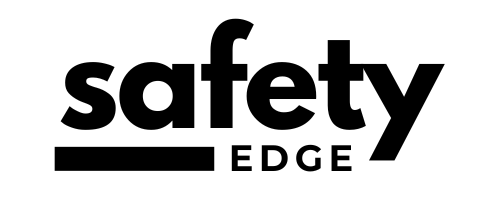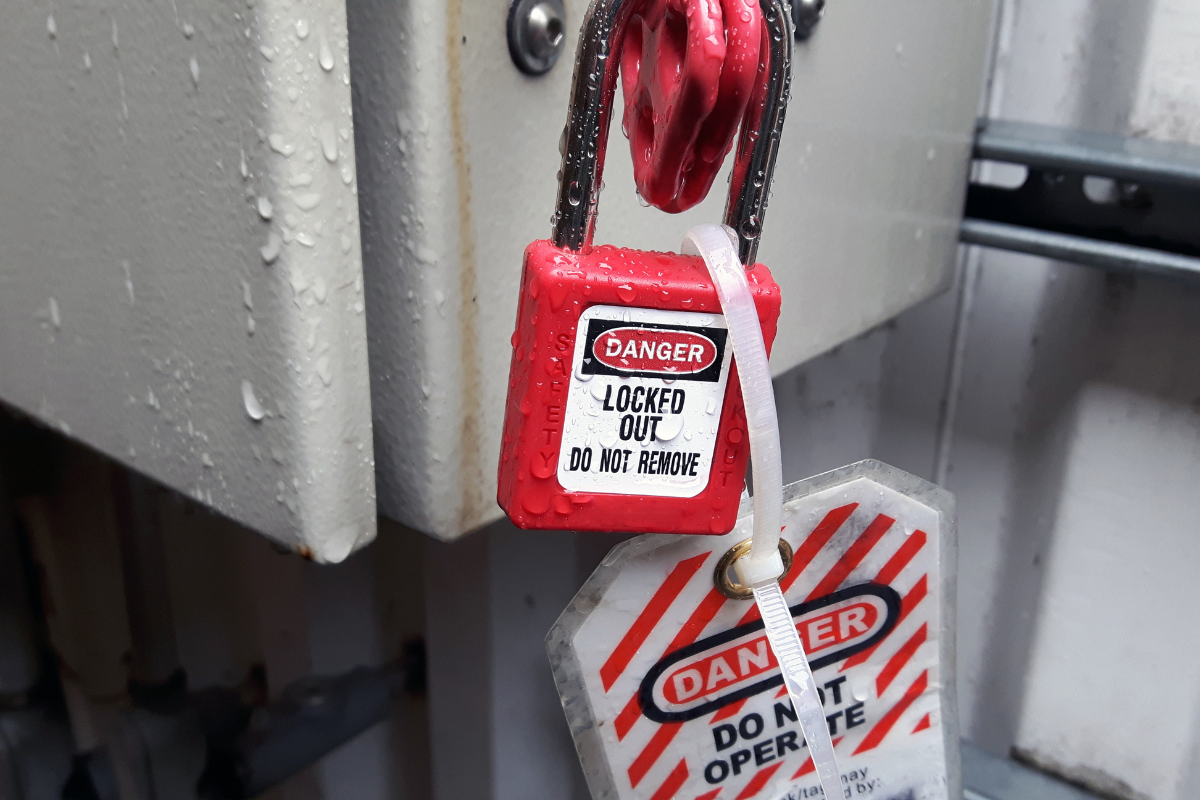Are your toolbox talks falling flat? Do you struggle to engage your team during safety meetings? Mastering the art of toolbox talks is essential for effective communication and ensuring that important information is properly conveyed. In this article, we will provide you with valuable tips and tricks to make your toolbox talks engaging and informative.
From construction sites to manufacturing facilities, toolbox talks are an essential part of any work environment. However, delivering these sessions in a way that captivates and educates your team can be a challenge. Thankfully, with the right approach and strategies, you can transform your toolbox talks into powerful communication tools.
We will explore various techniques that will help you grab your team’s attention, foster discussion, and deliver information effectively. From incorporating storytelling techniques to using visual aids, we will share proven methods to make your toolbox talks memorable and impactful.
Whether you are a seasoned safety professional or just starting in your role, this article will provide you with valuable insights and practical advice to enhance your toolbox talks and create a safer work environment. Let’s dive in and master the art of engaging and informative toolbox talks together.
What are toolbox talks?
Toolbox talks, also known as safety meetings or tailgate meetings, are short, informal sessions held in the workplace to discuss specific safety topics and address any concerns or issues related to the work being performed. These talks are an opportunity for employers and employees to come together and collaborate on maintaining a safe and healthy work environment.
The purpose of toolbox talks is to provide relevant information, reinforce safety protocols, and promote a culture of safety within the organization. These sessions typically focus on specific hazards, procedures, equipment, or tasks that are relevant to the team’s work. By regularly conducting toolbox talks, companies can improve safety awareness, reduce accidents, and enhance overall productivity.
To make toolbox talks effective, it is crucial to ensure that they are engaging and informative. Simply reading from a script or delivering a monotonous lecture will not capture your team’s attention or effectively convey important safety information. In the following sections, we will explore various strategies to make your toolbox talks more engaging and informative.
—
Importance of engaging and informative toolbox talks
Engaging and informative toolbox talks are crucial for several reasons. First and foremost, they help to capture and maintain your team’s attention. By using interactive techniques and incorporating real-life examples, you can create a more dynamic and engaging environment. When employees are actively involved and interested in the discussions, they are more likely to retain the information and apply it to their work.
Furthermore, engaging toolbox talks foster discussion and collaboration among team members. Encouraging open dialogue allows employees to share their experiences, concerns, and suggestions, leading to a better understanding of potential hazards and the development of effective solutions. This collaborative approach not only improves safety but also strengthens teamwork and employee engagement.
Informative toolbox talks are also essential for ensuring that employees have the knowledge and skills necessary to perform their jobs safely. By providing clear instructions, demonstrating correct procedures, and sharing relevant information, you can equip your team with the tools they need to identify and mitigate workplace hazards. Well-informed employees are more likely to make safe choices and contribute to a safer work environment.
—
Tips for effective communication during toolbox talks
Effective communication is the foundation of engaging and informative toolbox talks. To ensure that your message is understood and remembered, consider the following tips:
- Know your audience: Tailor your message to the specific needs and knowledge level of your team. Use language and examples that are relatable to their work environment and experiences.
- Keep it concise: Toolbox talks should be brief and focused. Stick to the main points and avoid overwhelming your team with excessive information.
- Use simple language: Avoid technical jargon or complicated terminology. Use plain language that everyone can understand.
- Be enthusiastic: Your energy and enthusiasm will directly impact the engagement level of your team. Show passion for the topic and use a confident and engaging tone of voice.
- Ask questions: Encourage participation by asking questions throughout the talk. This will help to gauge understanding and promote active engagement.
- Provide visual cues: Use body language and gestures to enhance your message. Maintain eye contact, use hand movements to emphasize key points, and vary your tone of voice to keep your team engaged.
Remember, effective communication is a two-way street. Encourage your team to ask questions, seek clarification, and share their thoughts and experiences. Creating an open and supportive environment will foster better communication and improve the overall effectiveness of your toolbox talks.
Planning and preparation for toolbox talks
Proper planning and preparation are essential for delivering engaging and informative toolbox talks. Follow these steps to ensure that your sessions are well-organized and impactful:
- Choose relevant topics: Select topics that are directly related to the work being performed and address current safety concerns. This will help to ensure that the information is practical and applicable to your team.
- Research and gather information: Before delivering a toolbox talk, gather relevant information from reliable sources. This may include industry guidelines, best practices, incident reports, or regulatory requirements.
- Create an outline: Structure your talk by creating an outline that includes the main points you want to cover. This will help you stay focused and ensure that all important aspects are addressed.
- Prepare visual aids: Visual aids can greatly enhance the effectiveness of your toolbox talk. Consider creating simple diagrams, charts, or slides that visually represent key concepts or procedures. These visual aids will help to reinforce your message and improve understanding.
- Practice and rehearse: Familiarize yourself with the content and practice delivering the talk before presenting it to your team. This will help you feel more confident and ensure a smooth delivery.
- Set up the environment: Arrange the meeting area in a way that promotes engagement and interaction. Use a whiteboard or flipchart to write down key points or draw diagrams during the talk. Ensure that everyone can see and hear you clearly.
By investing time in planning and preparation, you can deliver toolbox talks that are well-structured, informative, and engaging. This will not only benefit your team but also enhance your professional reputation as a safety leader.
Engaging participants through interactive activities
One of the most effective ways to make your toolbox talks engaging is by incorporating interactive activities. These activities encourage active participation, stimulate critical thinking, and make the learning experience more enjoyable. Here are some ideas for interactive activities to try during your toolbox talks:
- Group discussions: Divide your team into small groups and assign them a specific topic or scenario to discuss. After a designated time, ask each group to share their findings or conclusions with the larger group. This promotes collaboration and allows participants to learn from each other’s perspectives.
- Role-playing: Assign different roles or scenarios to participants and ask them to act out a specific situation related to the topic of discussion. This interactive activity helps participants understand the practical application of safety protocols and procedures.
- Case studies: Present real-life case studies or incidents and ask participants to analyze the situation, identify the contributing factors, and suggest preventive measures. This activity encourages critical thinking and problem-solving skills.
- Quiz or game: Create a short quiz or game based on the topic of the toolbox talk. This can be done individually or in teams, and it helps to reinforce key points while making the session more enjoyable.
- bnHands-on demonstrations: Whenever possible, provide hands-on demonstrations of equipment or procedures. This allows participants to see and experience the topic firsthand, making it more memorable and relatable.
Using visual aids and props to enhance toolbox talks
Visual aids and props are powerful tools for enhancing the effectiveness of your toolbox talks. They help to reinforce your message, improve understanding, and make the session more visually engaging. Here are some ideas for using visual aids and props:
- Posters and charts: Display posters or charts that illustrate important safety procedures, diagrams, or warning signs. These visual aids serve as a constant reminder of key points and can be referenced during the talk.
- Videos and animations: Incorporate videos or animations that demonstrate specific safety procedures or highlight potential hazards. Visual storytelling is an effective way to engage your audience and make complex concepts more accessible.
- Interactive presentations: Use presentation software, such as PowerPoint or Prezi, to create visually appealing slides that complement your talk. Include images, diagrams, or videos to support your message and make it more engaging.
- Physical props: Utilize physical props that participants can see, touch, or interact with. For example, if discussing the importance of wearing personal protective equipment (PPE), bring in different types of PPE and demonstrate their proper use.
When using visual aids and props, remember to keep them simple and relevant. Avoid cluttering your presentation with too much information or distracting visuals. The goal is to enhance understanding and engagement, not overwhelm your audience.
Incorporating real-life examples and case studies
One of the most effective ways to make your toolbox talks relatable and impactful is by incorporating real-life examples and case studies. Sharing actual incidents, near misses, or success stories helps to demonstrate the consequences of unsafe practices and the importance of following safety protocols. Here’s how you can incorporate real-life examples and case studies into your toolbox talks:
- Choose relevant examples: Select examples that are directly related to the topic being discussed and are relatable to your team’s work environment. This will help to create a connection and make the examples more meaningful.
- Highlight the consequences: When discussing incidents or near misses, focus on the potential consequences and the impact they had on individuals or the organization. This helps to emphasize the importance of following safety procedures and motivates employees to take safety seriously.
- Analyze contributing factors: Encourage participants to analyze the contributing factors that led to the incident or near miss. This helps to develop a better understanding of the underlying causes and enables employees to identify potential hazards in their own work environment.
- Discuss preventive measures: After presenting a case study, discuss the preventive measures that could have been implemented to avoid the incident or near miss. This promotes critical thinking and empowers employees to proactively identify and mitigate risks.
Real-life examples and case studies bring authenticity and relevance to your toolbox talks. They make the information more relatable and memorable, ensuring that your team understands the importance of safety practices and the potential consequences of not following them.
Encouraging participation and feedback during toolbox talks
Active participation and feedback are vital for creating engaging and informative toolbox talks. By encouraging participation, you foster a sense of ownership and engagement among your team members.
Here are some strategies to promote participation and feedback during your toolbox talks:
- Ask open-ended questions: Instead of asking simple yes/no questions, ask open-ended questions that require participants to provide more detailed answers. This encourages discussion and allows participants to share their knowledge and experiences.
- Create a safe environment: Foster a safe and supportive environment where everyone feels comfortable sharing their thoughts and ideas. Encourage active listening and respect for different perspectives.
- Use technology: Incorporate technology, such as polling apps or online platforms, to gather feedback or conduct surveys during the talk. This allows for anonymous participation and provides valuable insights.
- Assign discussion leaders: Invite participants to take turns leading discussions on specific topics. This promotes engagement and encourages individuals to take ownership of their learning experience.
- Provide feedback opportunities: After each toolbox talk, provide an opportunity for participants to share their feedback. This can be done through anonymous surveys or open discussions. Use this feedback to continuously improve future toolbox talks.
By actively involving your team in the toolbox talks, you create a collaborative learning environment where everyone can contribute their knowledge and insights. This not only enhances the effectiveness of the sessions but also fosters a culture of continuous improvement and shared responsibility for safety.
Evaluating the effectiveness of toolbox talks
To ensure that your toolbox talks are truly engaging and informative, it is important to evaluate their effectiveness. This allows you to identify areas for improvement and make necessary adjustments. Here are some ways to evaluate the effectiveness of your toolbox talks:
- Assess knowledge retention: After each session, quiz participants on the key points covered in the toolbox talk. This will help you gauge their understanding and identify any knowledge gaps.
- Solicit feedback: Encourage participants to provide feedback on the toolbox talk. Ask them what they found valuable, what could be improved, and if they have any suggestions for future sessions.
- Observe behavior change: Monitor if employees are implementing the safety practices discussed in the toolbox talks. Observe their behavior and provide feedback when necessary.
- Track incident rates: Keep track of incident rates before and after implementing toolbox talks. If incident rates decrease, it indicates that the talks are effective in promoting a safer work environment.
Regular evaluation of your toolbox talks allows you to continuously improve and refine your approach. By addressing any areas of improvement, you can ensure that your toolbox talks remain engaging, informative, and impactful.
Conclusion: The key to successful toolbox talks
Mastering the art of toolbox talks is essential for effective communication and creating a safer work environment. By incorporating engaging techniques, using visual aids and props, and sharing real-life examples, you can captivate your team’s attention and deliver important safety information effectively.
Remember to encourage participation, foster discussion, and continuously evaluate the effectiveness of your toolbox talks. By implementing these tips and tricks, you will enhance the impact of your toolbox talks and empower your team to prioritize safety in the workplace.
Whether you are a seasoned safety professional or just starting in your role, the insights and practical advice provided in this article will help you master the art of engaging and informative toolbox talks. Invest the time and effort into improving your toolbox talks, and you will see the positive impact on your team’s safety awareness and overall work performance.
Now, it’s time to take what you’ve learned and put it into action. Start planning your next toolbox talk, incorporate the strategies shared in this article, and watch your sessions become engaging, informative, and transformational.



